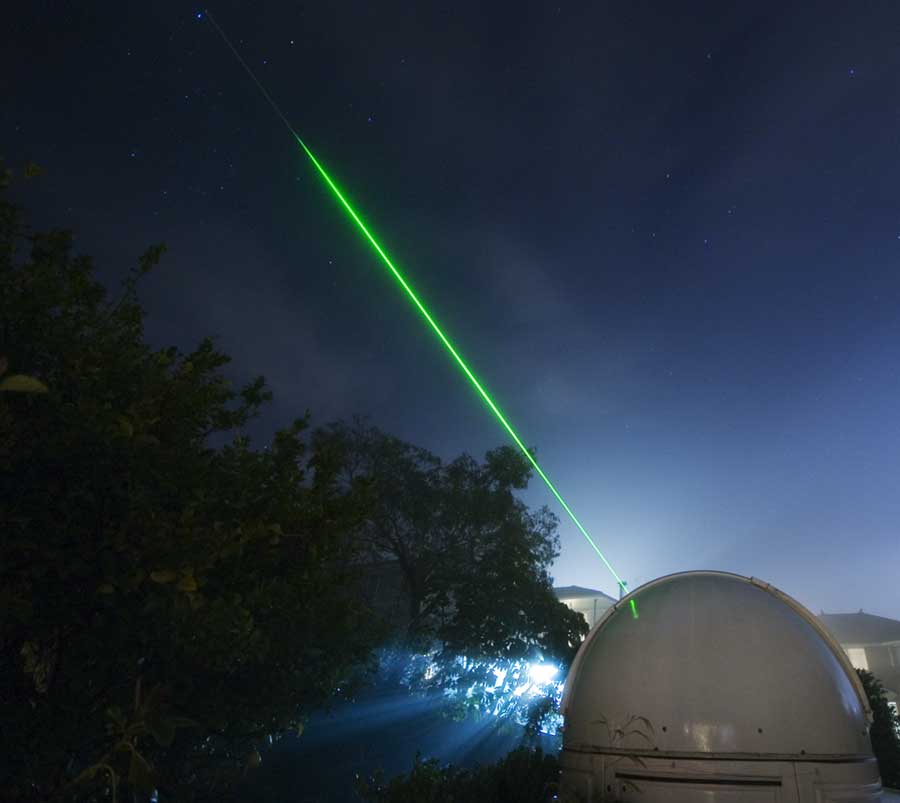How Does Weather Affect Lasers?
Most recent answer: 08/26/2013
- Denise Johnson (age 40)
San Jose, CA USA
Hi Denise,
All of the effects you mention sound quite important, and would be great to experiment with!
Furthermore, these questions are very important for modern experiments, telescopes, and even communication networks, many of which involve sending signals with lasers through the atmosphere. Since these signals often need to be sent many miles, scientists and engineers have to worry a lot about local weather.
Here's a nice photo of what happens to a laser in fog. I tried this once; it's very beautiful.

In fact, this laser is being used to measure how the atmosphere distorts light from starlight. Once you know this, you can correct for the distortion and get a better image. A good explanation of how this works is given here: . Here's a before and after to show how much you can improve a telescope's resolution by this method:

I've told you how useful a problem you and your son are thinking about, but I haven't said much about what tests you could actually perform. Many of these tests would be hard to do cheaply and easily, but if you use your imagination I'm sure you can come up with some cool ideas.
For example, you could measure how fast the beam dies out when traveling through rain, fog, smog, or snow. You could also place a screen far away and look at how the beam shape changes with weather conditions. (The shape of a beam is very important in optics experiments or applications.)
The temperature distribution of the air which a laser travels through can change the speed and direction of light, but by very small amounts (which I can't think of any easy way to measure).
Another interesting idea would be to look at what light does underwater or in ice.
Have fun, and tell us if you discover anything exciting!
David Schmid
(published on 08/26/2013)